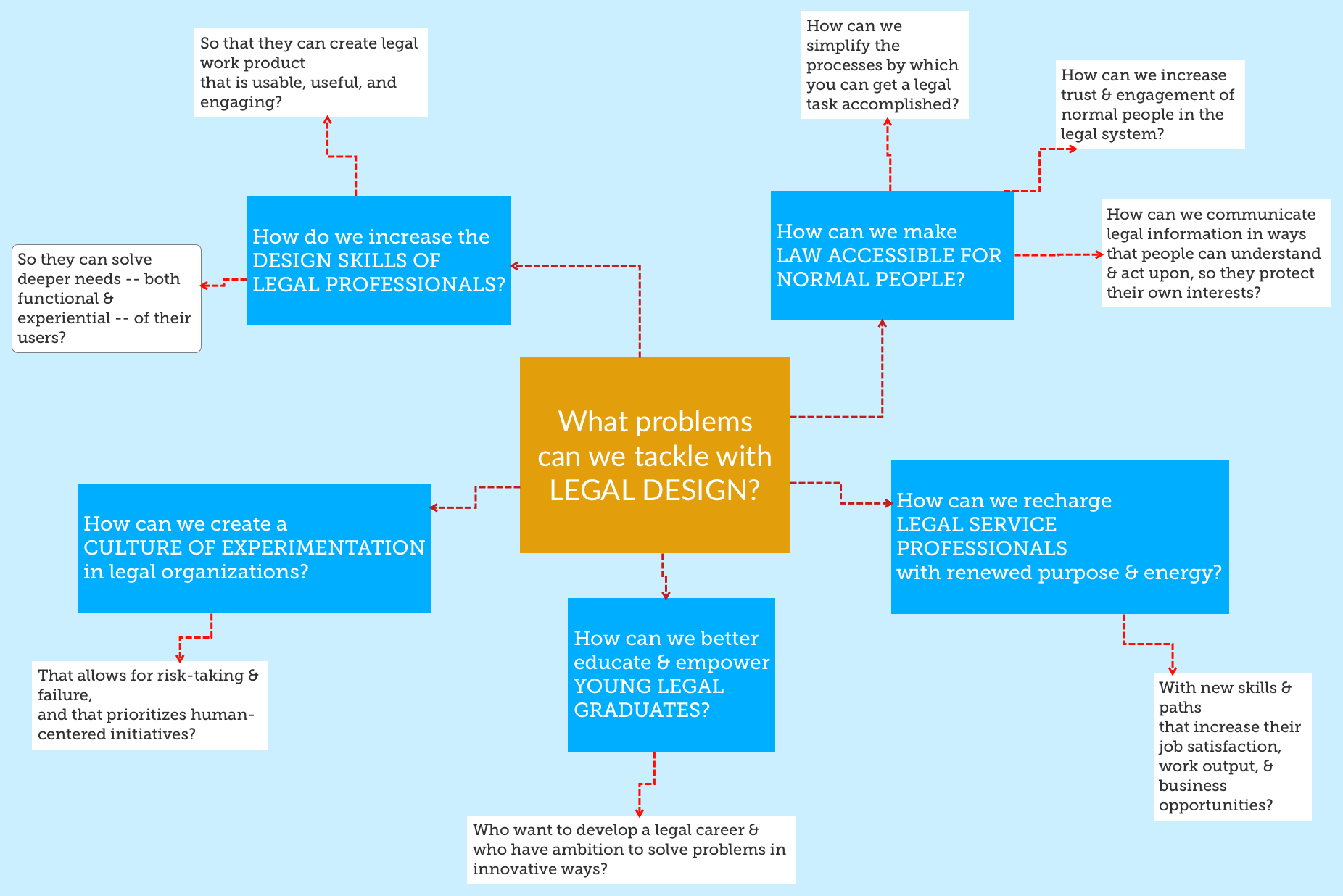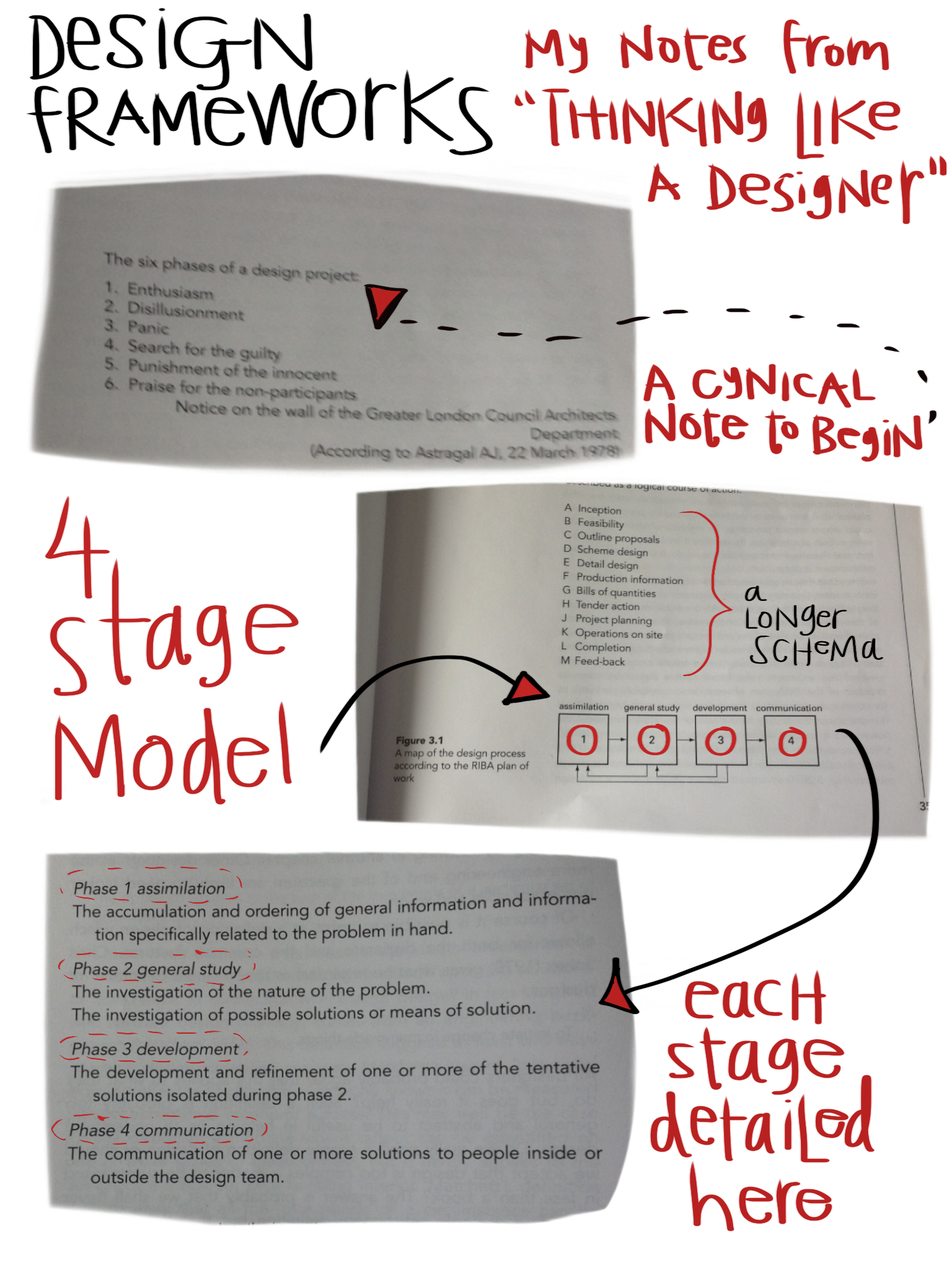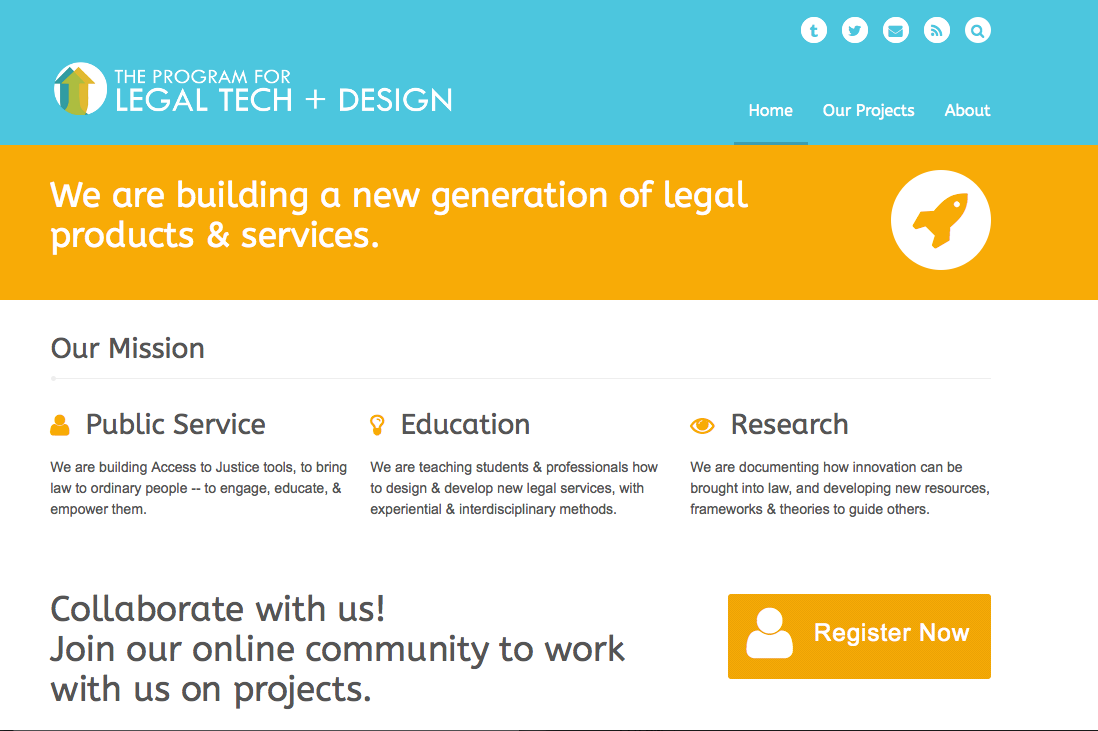Here’s a quick-note mindmap that I made while laying out notes for a paper I’m working on, defining what Legal Design is, and how design approaches can serve law.

I put this visual up on Open Law Lab’s home page, and I’ll likely be using it (or a version of it) in presentations to legal audiences. One of the most common misconceptions about design’s potential is that it is only applicable to how we lay out & format our communications. Certainly design skills & mindsets can help us create a better PowerPoint presentation or lay out clauses on a piece of paper in a more intuitive & pleasing way.
But design is about more than aesthetics. It is a problem-solving approach, just like like law is. Design is a set of mindsets, tools, and process that anyone (trained formally in design or not — traditionally ‘creative’ or not) can deploy when faced with a challenge. Just like law school teaches ‘thinking like a lawyer’, I would advocate we should also be learning how to ‘think (or better yet — act) like a designer.’ This entails having a deep focus on serving the needs of your user, an inclination to prototype and test quickly, and a passion for improving the user experience of what we create.
This mindmap stakes out some of the challenges in the legal sector that are most suited to a design approach to find solutions. If you have other ideas for some of these central challenges for legal design to be tackling — or examples of these broad groupings — let me know! Staking out the challenge areas can lead to more systematic approaches to innovation — with a better language to describe what we are working on, and more deliberate attention to which challenge areas should be worked on.


